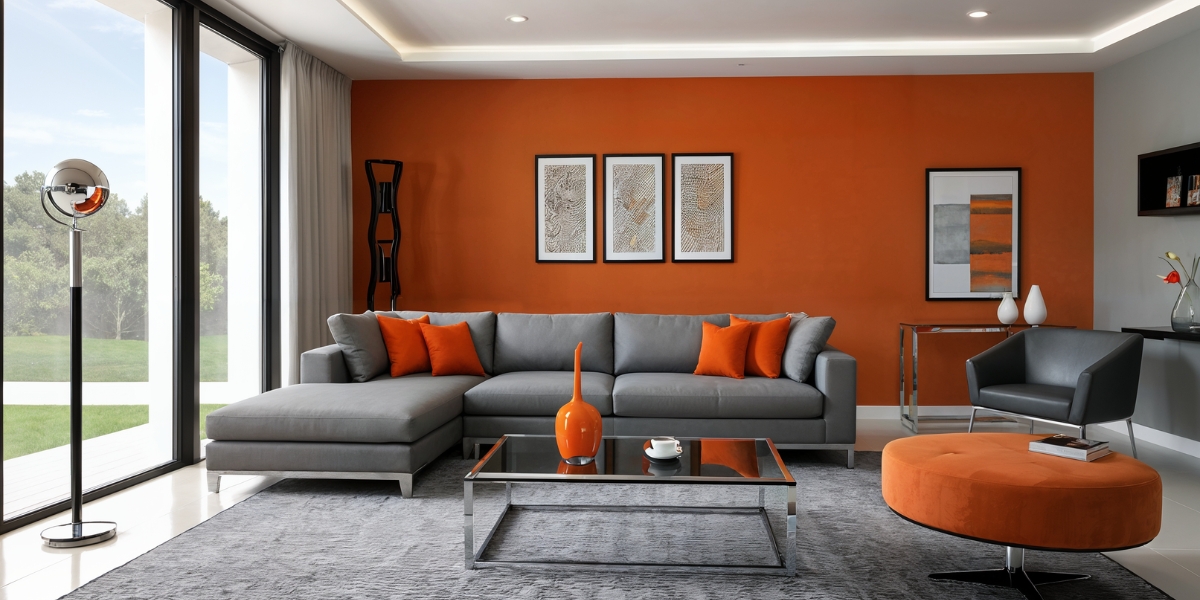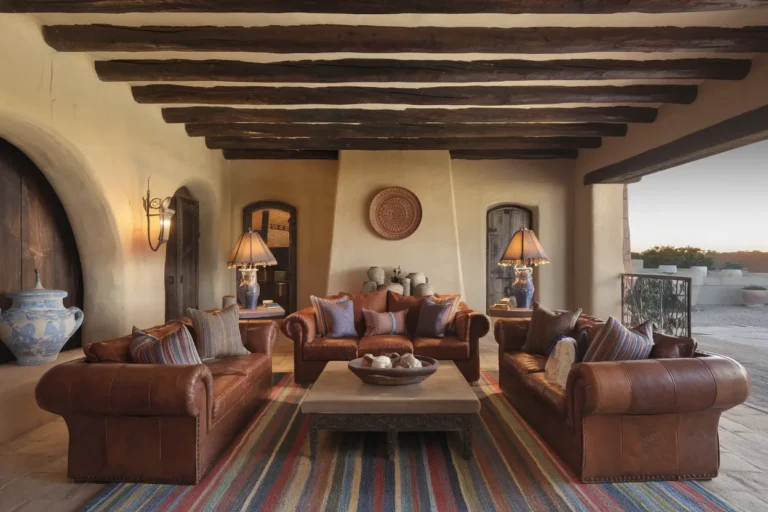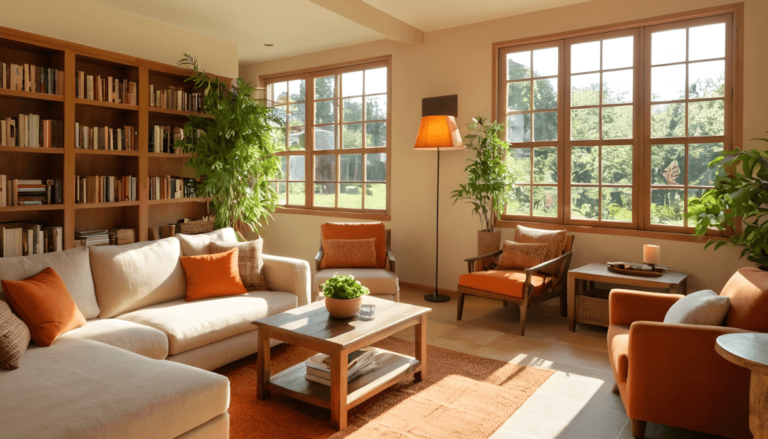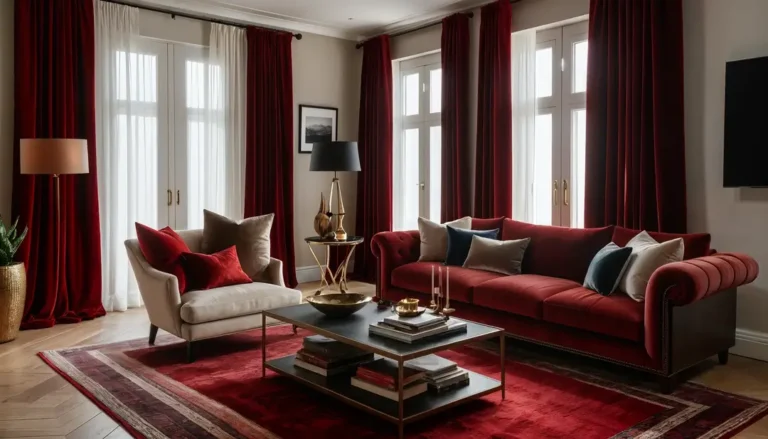In my experience working with homeowners on interior design projects, I’ve observed that burnt orange color integration often creates warmth and visual interest while requiring careful coordination with existing décor elements and room lighting conditions. Through various color consultation projects, I’ve learned that successful burnt orange application typically balances the color’s intensity with complementary tones and textures to achieve sophisticated rather than overwhelming results.
Note: For any structural modifications, electrical work, or installations mentioned in this article, always consult with licensed professionals to ensure safety and code compliance.
What makes burnt orange particularly appealing in interior design is its ability to add earthy warmth while working with various design aesthetics from modern to traditional styles. I’ve found that homeowners often choose burnt orange because it typically provides the cozy atmosphere that makes living spaces feel inviting while offering enough versatility to coordinate with different color palettes and furniture styles.
The key to successful burnt orange integration often lies in understanding color theory, lighting effects, and proportion balance to achieve the desired aesthetic impact. Effective burnt orange solutions typically incorporate appropriate color ratios, complementary materials, and lighting considerations that enhance rather than compete with the overall room design.
Here are 15 approaches for incorporating burnt orange into living room design that often work well in different home styles and lighting conditions, based on observations from various interior color projects.
1. Accent Wall Color Application
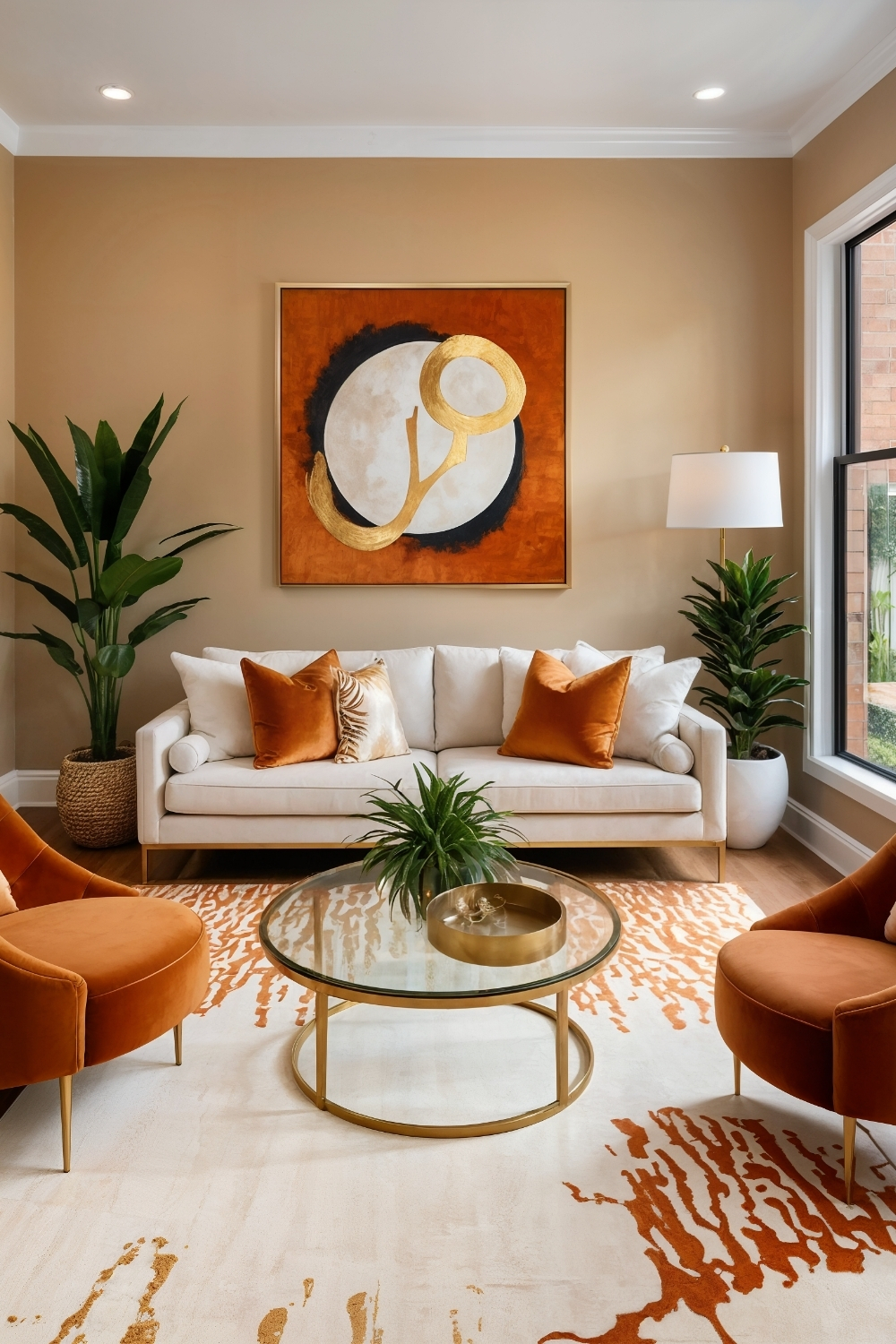
This focal point approach often appeals to homeowners wanting dramatic color impact with controlled application areas. Burnt orange accent walls paired with neutral furnishings typically create the statement foundation enhanced by metallic accents and complementary artwork placement.
Design consideration: Accent wall colors often require multiple paint samples tested under different lighting conditions while bold colors need high-quality paint products for even coverage and color retention.
Practical benefit: Accent wall design often provides the maximum color impact while limiting the commitment and cost compared to full-room color applications.
2. Mid-Century Modern Upholstery Integration
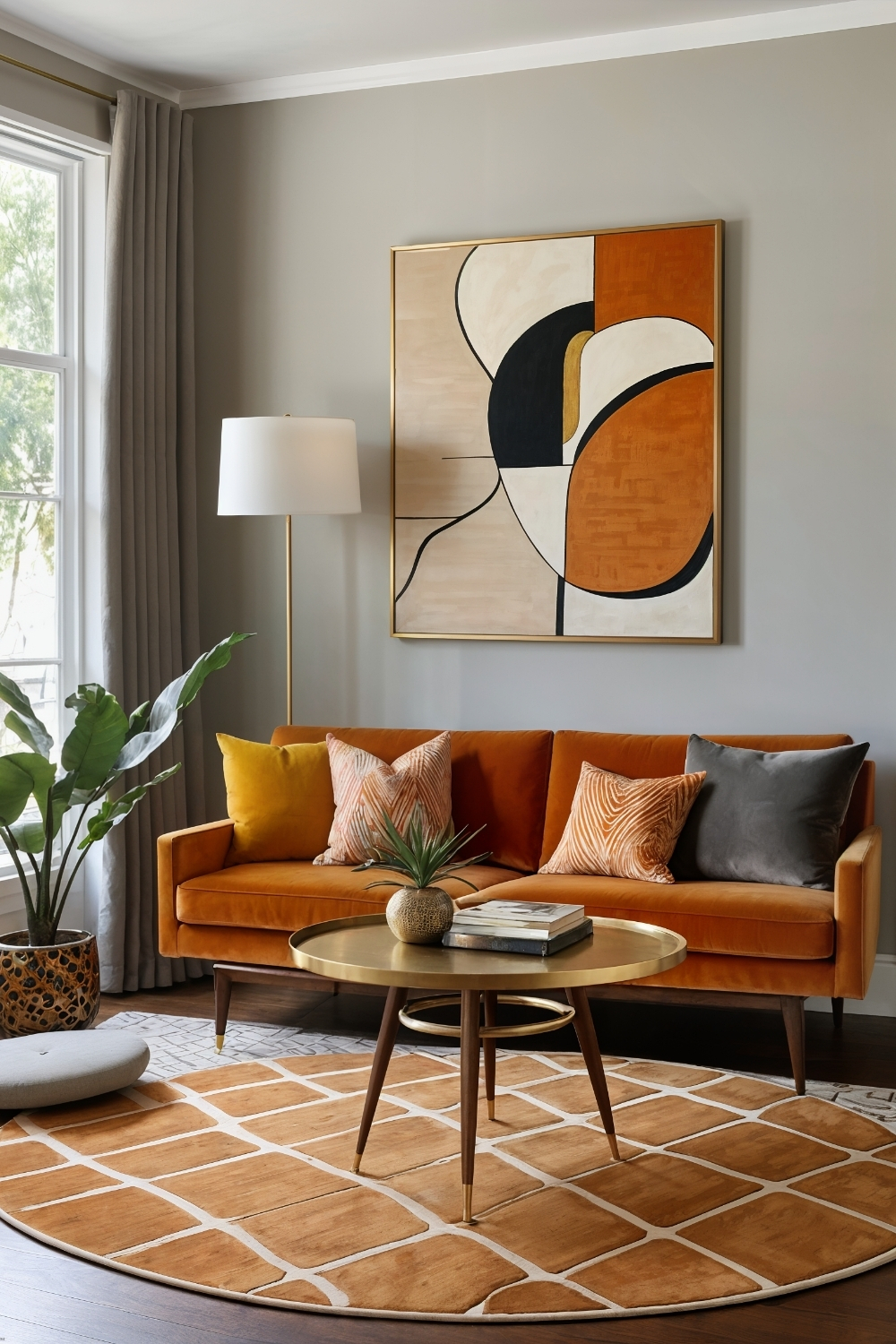
This retro approach often appeals to homeowners wanting period-appropriate color choices with authentic mid-century aesthetics. Burnt orange upholstered furniture paired with clean-lined wooden pieces typically creates the era-authentic foundation enhanced by geometric patterns and brass accent elements.
Design consideration: Bold upholstery colors often require quality fabrics that resist fading while mid-century furniture pieces may need restoration or high-quality reproductions for durability.
Practical benefit: Mid-century color schemes often provide the timeless appeal that works across changing décor trends while incorporating proven color combinations that ensure visual harmony.
3. Textural Throw Pillow Layering
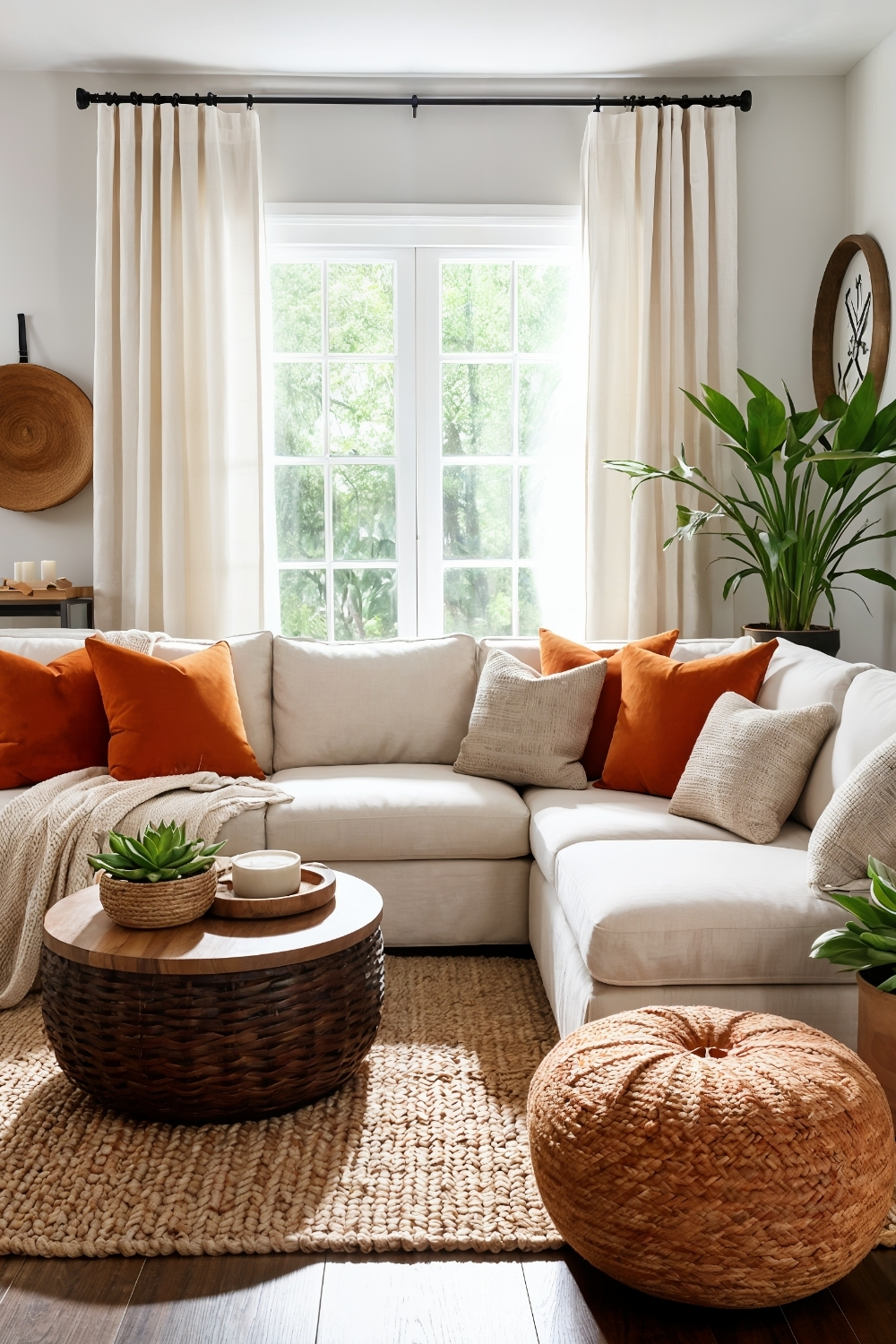
This accessible approach often appeals to homeowners wanting flexible color introduction with seasonal change capabilities. Varied texture burnt orange pillows paired with neutral seating typically creates the layered foundation enhanced by different fabric types and coordinated color accents.
Design consideration: Multiple pillow textures often require coordinated cleaning methods while color coordination needs consideration of existing furniture and lighting conditions.
Practical benefit: Pillow-based color introduction often provides the flexibility to test color preferences and seasonal changes without major furniture investment or permanent modifications.
4. Earthy Terracotta Coordination
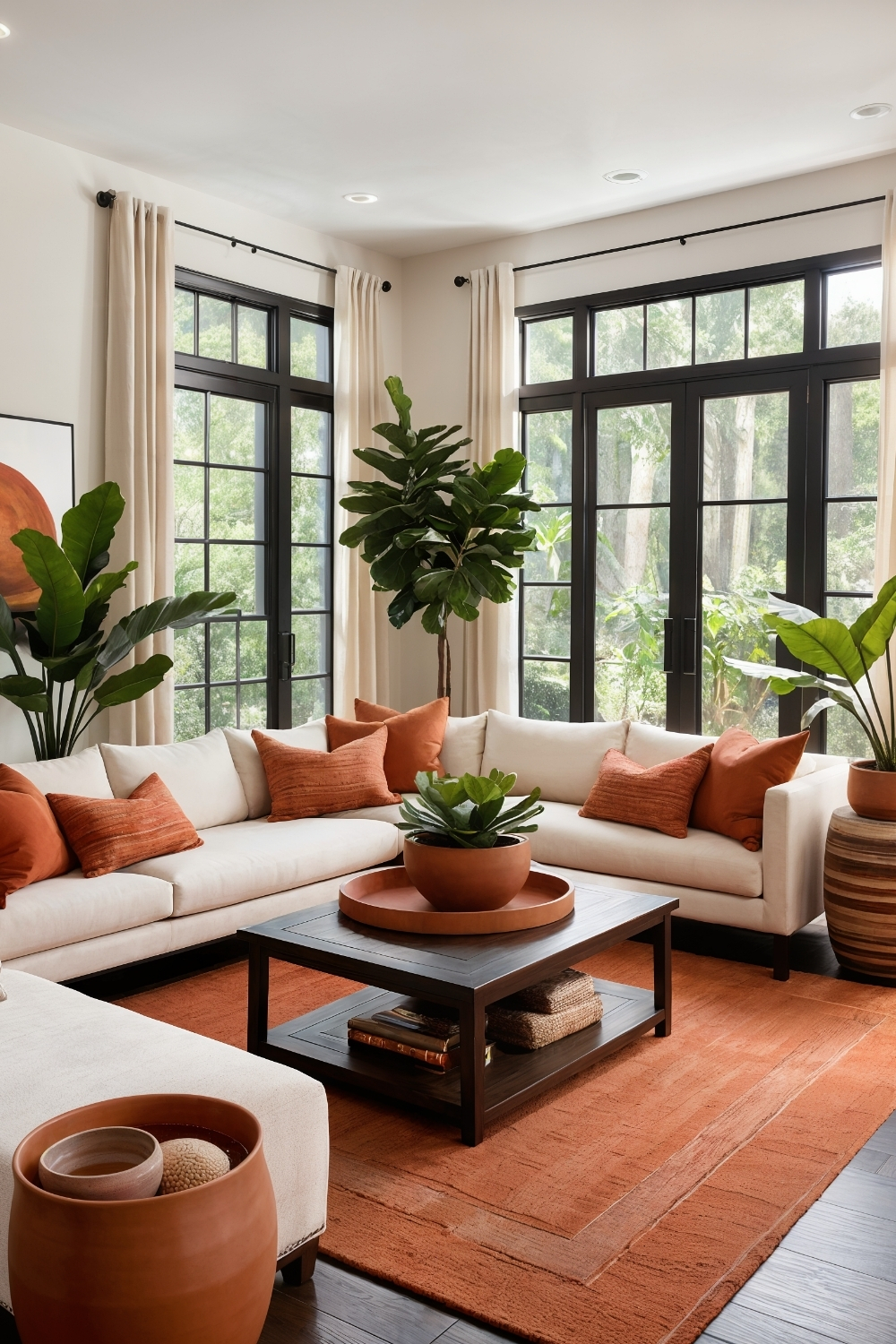
This natural approach often appeals to homeowners wanting organic color palettes with earth-tone harmony. Burnt orange elements paired with terracotta accessories typically create the grounded foundation enhanced by natural materials and abundant plant integration.
Design consideration: Earth-tone palettes often work best with adequate natural light while plant integration needs appropriate species selection and maintenance planning.
Practical benefit: Natural color coordination often creates the calming atmosphere while incorporating sustainable design elements that support biophilic interior principles.
5. Navy Blue Sophisticated Contrast

This balanced approach often appeals to homeowners wanting elegant color combinations with sophisticated visual impact. Burnt orange and navy pairings typically create the refined foundation enhanced by metallic accents and lighter neutral elements for balance.
Design consideration: High-contrast color schemes often require careful proportion planning while dark color combinations need adequate lighting to prevent spaces from feeling too heavy.
Practical benefit: Sophisticated color contrasts often create the memorable design impact while providing proven color combinations that ensure long-term visual appeal.
6. Rustic Material Integration
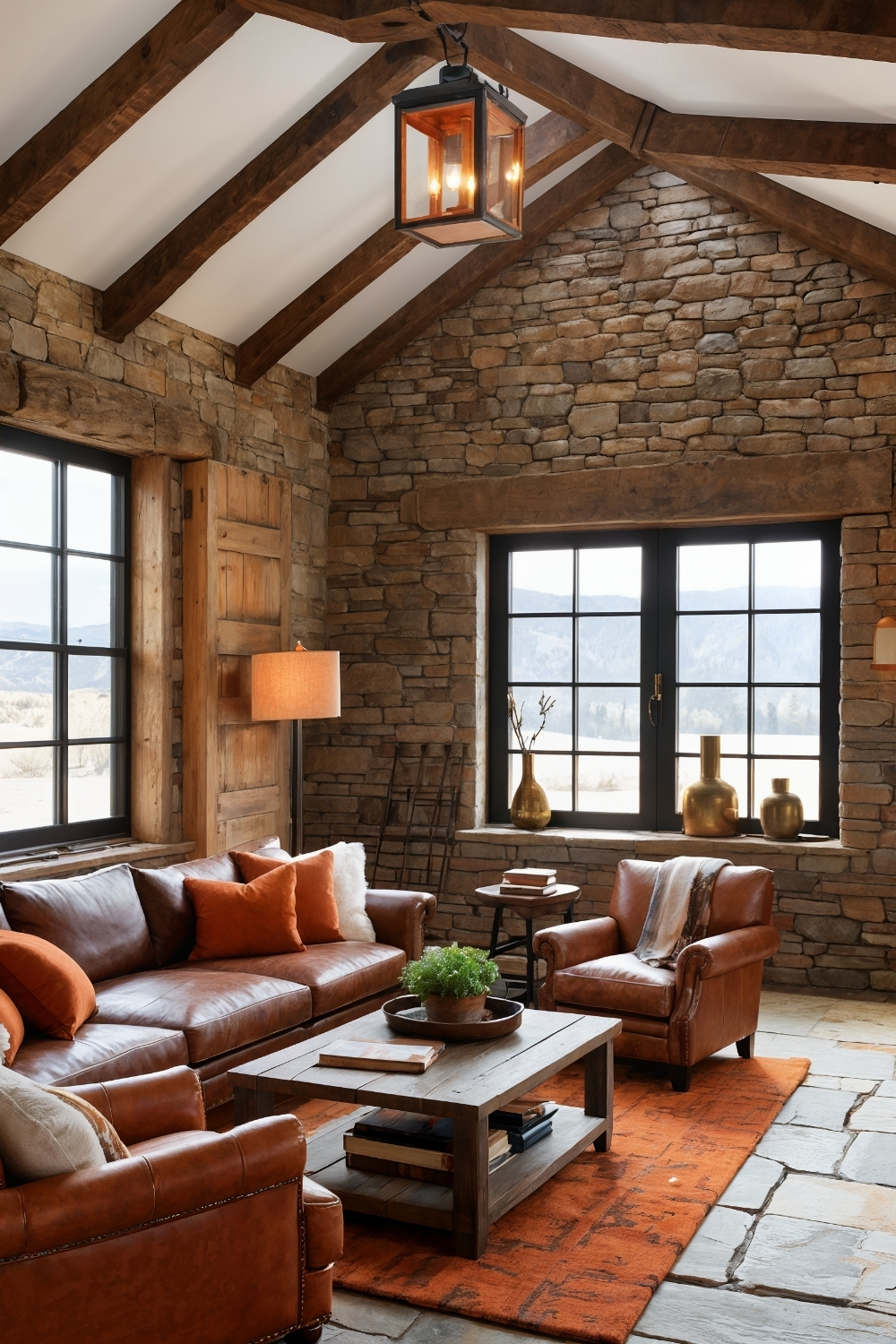
This cozy approach often appeals to homeowners wanting warm color coordination with natural material emphasis. Burnt orange accents paired with reclaimed wood and leather elements typically create the rustic foundation enhanced by vintage-inspired lighting and organic textures.
Design consideration: Rustic materials often require proper treatment for indoor use while vintage-inspired elements may need restoration or quality reproduction pieces.
Practical benefit: Rustic design often provides the comfortable, lived-in atmosphere while incorporating durable natural materials that age gracefully with use.
7. Layered Rug Design Strategy
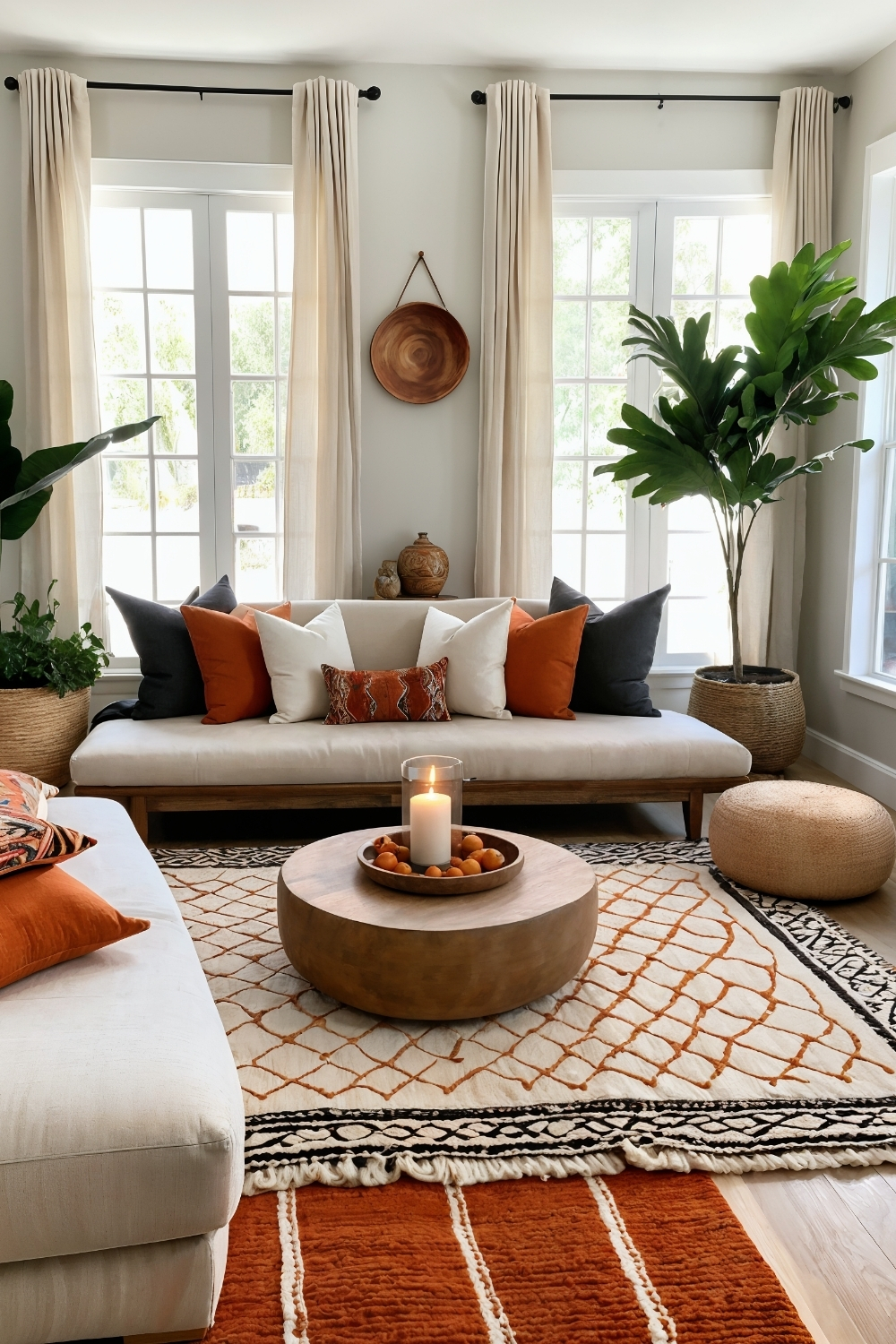
This textural approach often appeals to homeowners wanting visual interest with practical floor covering solutions. Burnt orange pattern rugs layered over neutral base rugs typically create the dimensional foundation enhanced by varied textures and strategic size coordination.
Design consideration: Rug layering often requires proper sizing and non-slip padding while pattern mixing needs careful color and scale coordination for visual harmony.
Practical benefit: Layered rug design often provides the flexibility to change color emphasis seasonally while protecting floors and adding comfort to seating areas.
8. Window Treatment Color Integration
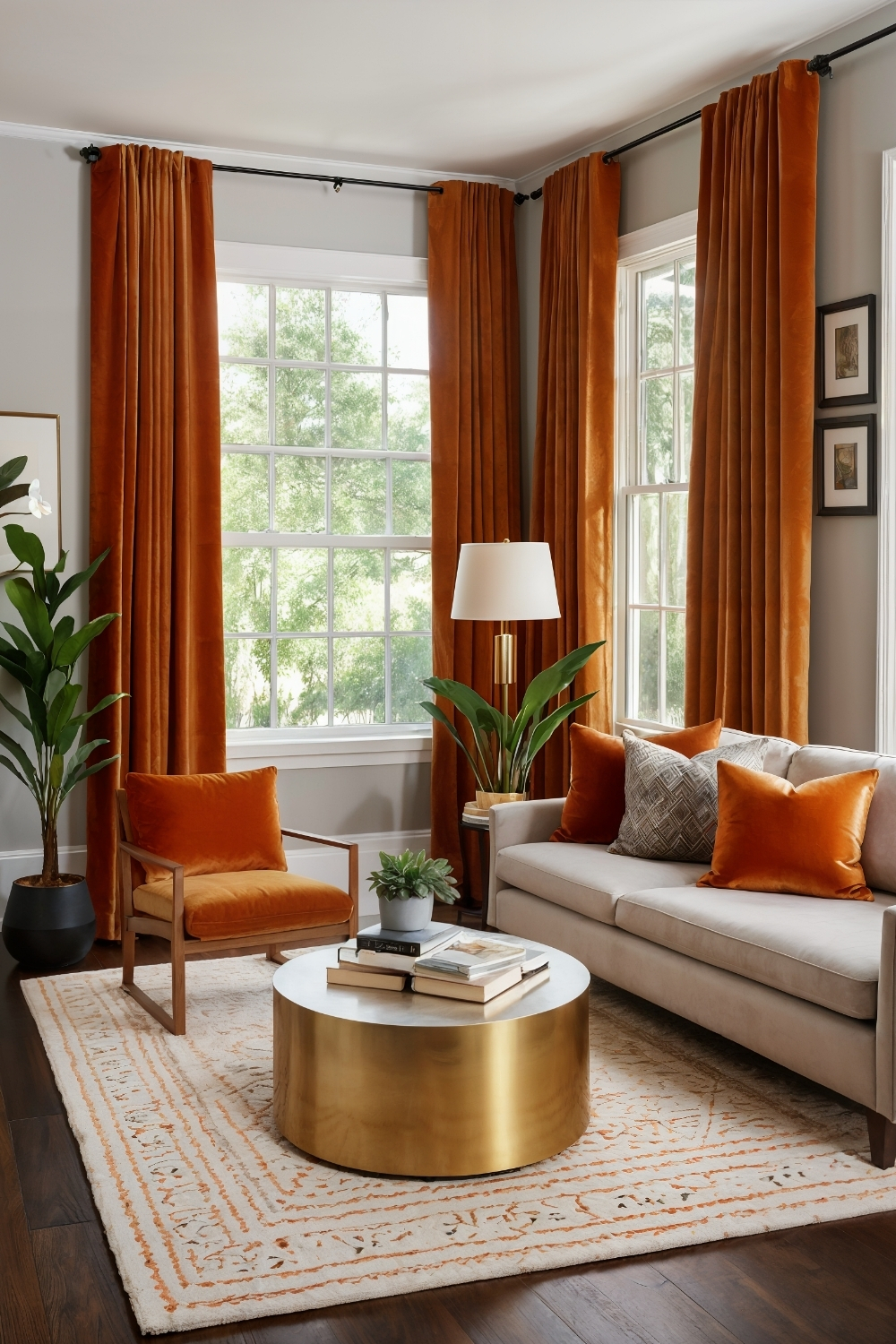
This atmospheric approach often appeals to homeowners wanting ambient color effects with light filtering capabilities. Burnt orange curtains in quality fabrics typically create the warm foundation enhanced by appropriate hanging systems and coordinated room lighting.
Design consideration: Colored window treatments often affect natural light quality while fabric selection needs consideration of UV resistance and cleaning requirements.
Practical benefit: Curtain color integration often transforms room atmosphere while providing the practical light control and privacy that supports daily living needs.
9. Monochromatic Design Execution
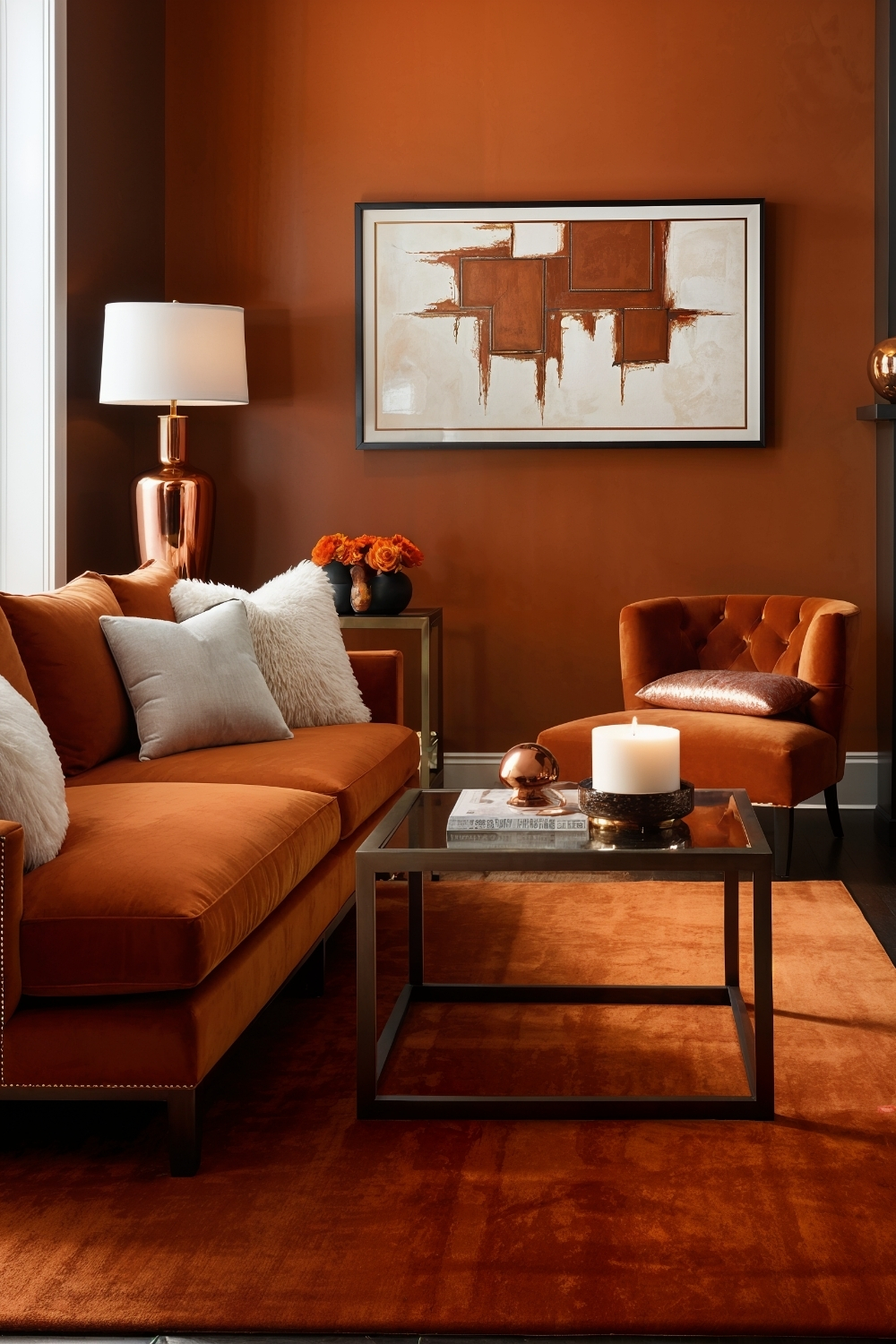
This bold approach often appeals to homeowners wanting dramatic color statements with sophisticated execution. Various burnt orange tones throughout the space typically create the cohesive foundation enhanced by varied textures and metallic accent integration.
Design consideration: Monochromatic schemes often require careful texture variation and lighting planning while single-color approaches need quality material selection to avoid visual monotony.
Practical benefit: Monochromatic design often creates the memorable, cohesive atmosphere while demonstrating sophisticated color understanding and design confidence.
10. Leather Furniture Statement Pieces
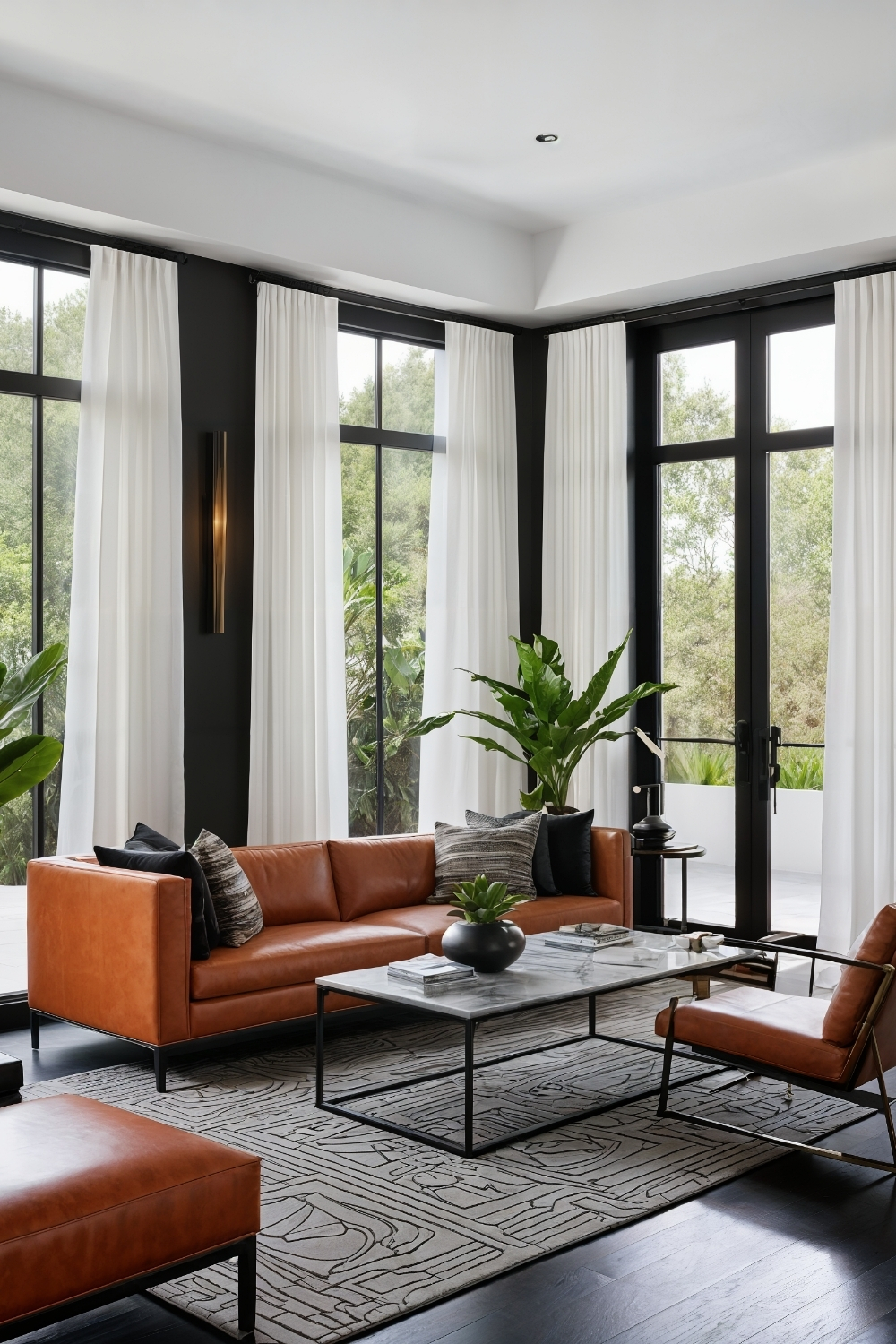
This luxury approach often appeals to homeowners wanting quality furniture investment with distinctive color character. Burnt orange leather seating paired with complementary neutral elements typically creates the sophisticated foundation enhanced by quality construction and timeless appeal.
Design consideration: Leather furniture often requires proper care and conditioning while bold-colored pieces need coordination with existing décor and lighting conditions.
Practical benefit: Quality leather furniture often provides the long-term durability and aging character while creating the distinctive focal points that define sophisticated interiors.
11. Vintage Gold Accent Coordination
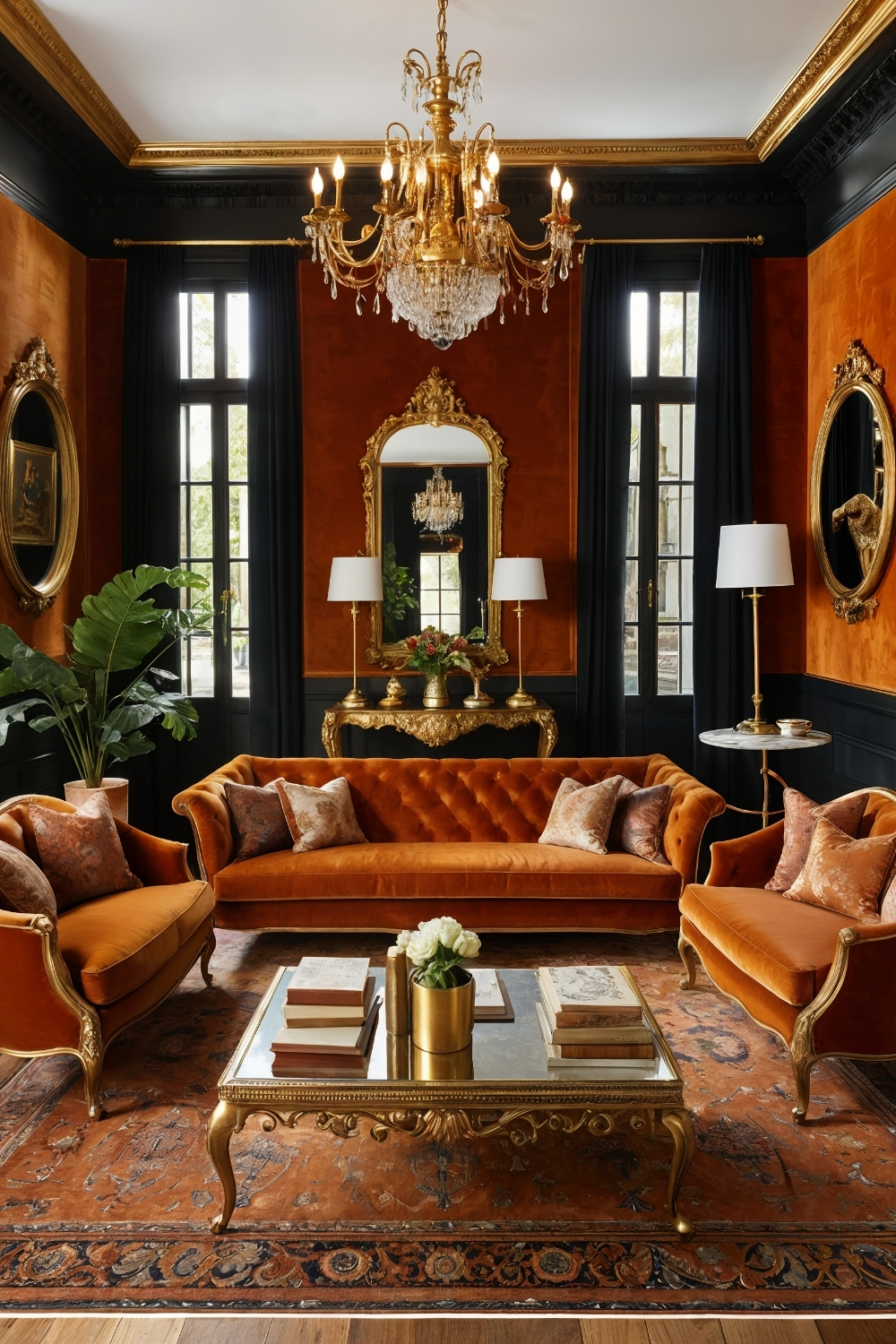
This elegant approach often appeals to homeowners wanting luxurious color combinations with historical design references. Burnt orange elements paired with gold metallic accents typically create the opulent foundation enhanced by vintage-inspired accessories and rich material choices.
Design consideration: Gold accents often require quality finishes that resist tarnishing while vintage-inspired pieces may need authentic materials for proper aesthetic effect.
Practical benefit: Vintage luxury combinations often create the timeless elegance while incorporating proven color relationships that ensure lasting visual appeal.
12. Minimalist Accent Integration
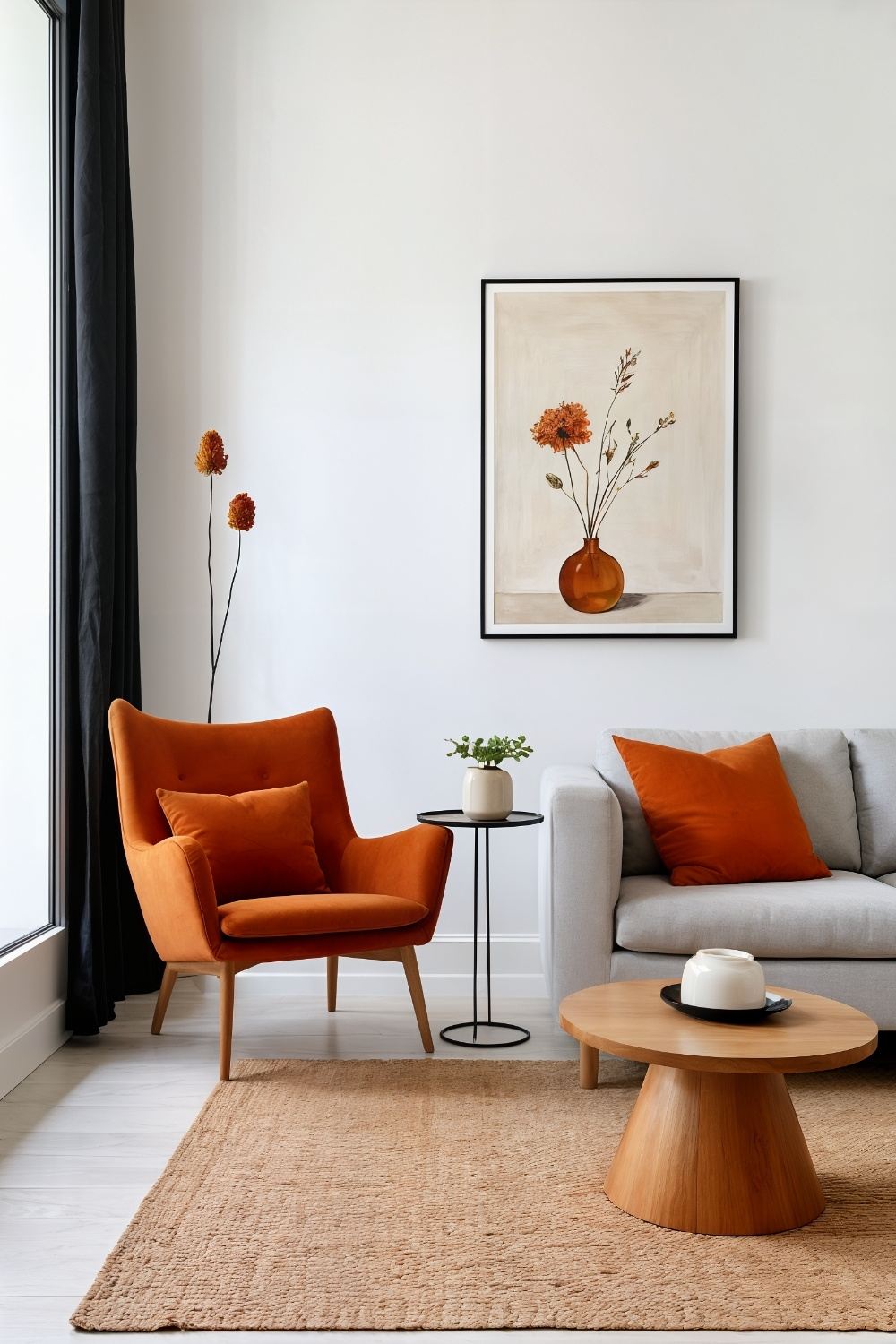
This restrained approach often appeals to homeowners wanting subtle color introduction with clean aesthetic maintenance. Limited burnt orange elements paired with neutral minimalist foundations typically create the balanced foundation enhanced by quality materials and precise placement.
Design consideration: Minimalist color use often requires high-quality pieces and precise placement while restrained approaches need careful selection of impactful elements.
Practical benefit: Minimalist integration often provides the sophisticated color interest while maintaining the clean, uncluttered atmosphere that defines contemporary minimalist design.
13. White Contrast Modernization
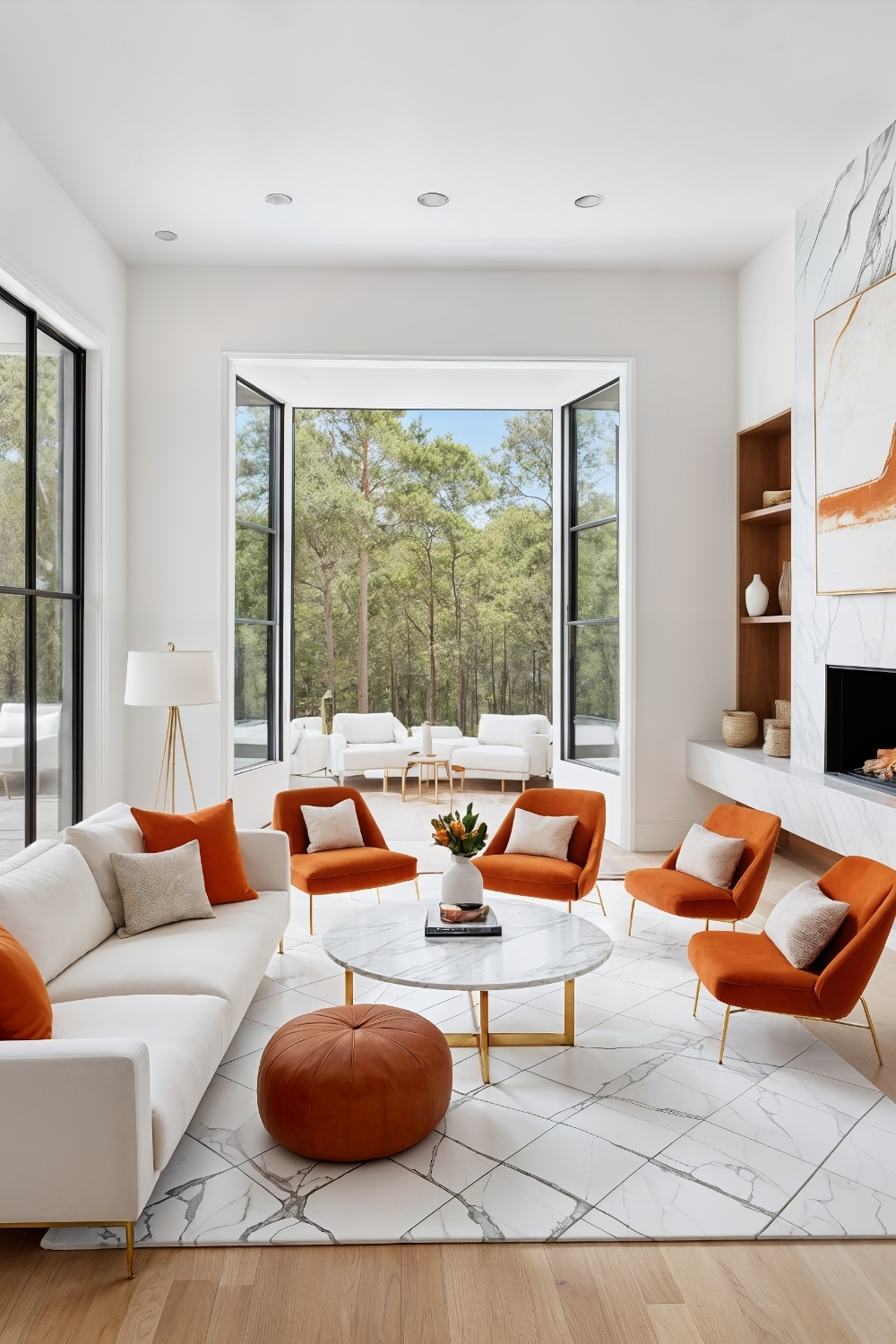
This fresh approach often appeals to homeowners wanting contemporary color combinations with bright, energetic results. Burnt orange accents paired with white foundations typically create the modern foundation enhanced by natural textures and plant integration.
Design consideration: White and orange combinations often require quality paint finishes and careful proportion planning while bright schemes need adequate natural light for optimal effect.
Practical benefit: Fresh color contrasts often create the energizing atmosphere while providing the flexibility to adjust color intensity through accessories and seasonal changes.
14. Eclectic Pattern Mixing
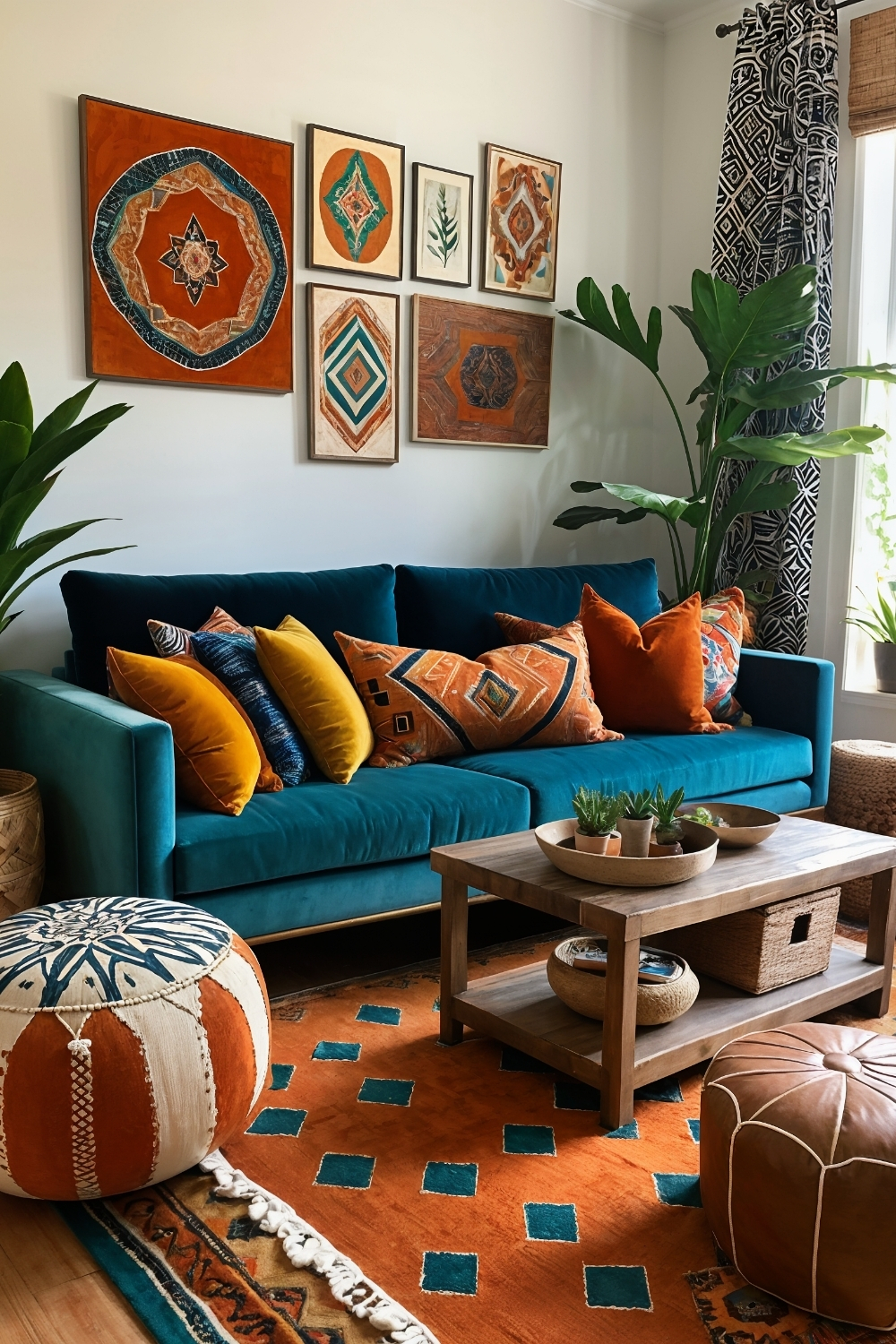
This creative approach often appeals to homeowners wanting diverse style integration with cohesive color threading. Burnt orange elements throughout varied patterns and styles typically create the unified foundation enhanced by global-inspired accessories and mixed material textures.
Design consideration: Eclectic mixing often requires careful color and scale coordination while diverse patterns need common elements to maintain visual cohesion.
Practical benefit: Eclectic design often provides the personal expression opportunities while creating the collected, well-traveled atmosphere that reflects individual taste and experiences.
15. Grey Modern Sophistication
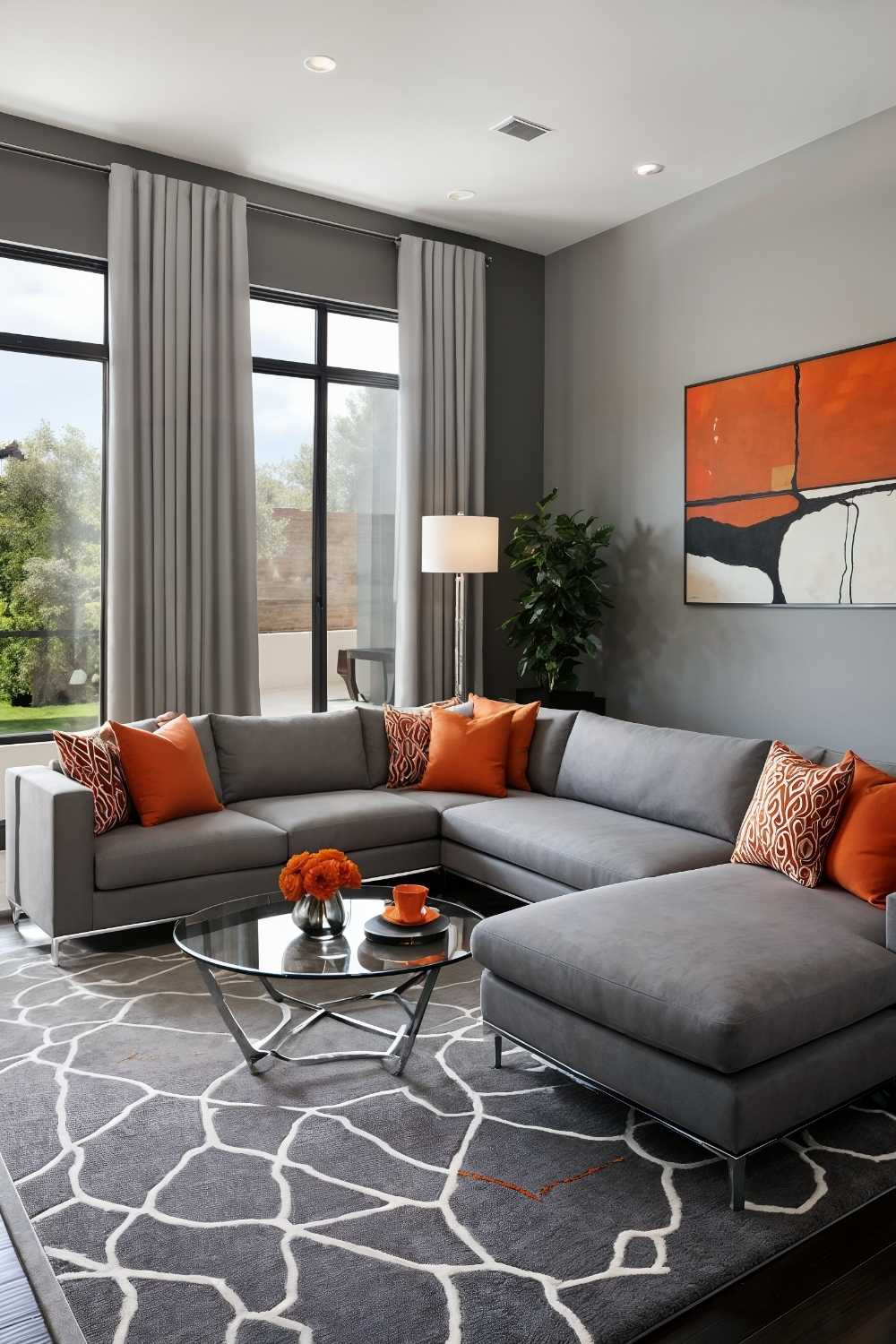
This contemporary approach often appeals to homeowners wanting current color trends with sophisticated balance. Burnt orange and grey combinations typically create the modern foundation enhanced by metallic accents and varied grey tone integration.
Design consideration: Grey and orange combinations often require careful tone selection and lighting consideration while modern schemes need quality materials for proper aesthetic execution.
Practical benefit: Contemporary color combinations often provide the current design relevance while creating the sophisticated atmosphere that appeals to modern living preferences.
Planning Color Integration Projects
When planning burnt orange integration projects, several practical considerations often influence successful outcomes. Color testing typically requires multiple samples viewed under different lighting conditions and at various times of day to ensure desired effects.
Existing furniture and décor coordination frequently involves evaluating current pieces for compatibility with new color schemes and determining which elements may need updating or replacement. Many color integration projects benefit from phased implementation that allows testing color effects before committing to larger investments.
Budget planning often prioritizes high-impact, reversible changes like paint and accessories before investing in major furniture pieces or permanent modifications. Professional color consultation may prove valuable for complex color schemes or when coordinating multiple room areas.
Lighting assessment often requires understanding how natural and artificial light affects color appearance throughout daily and seasonal cycles, particularly important for bold colors like burnt orange that can appear dramatically different under various lighting conditions.
Remember: For any electrical work modifications, structural changes, or built-in installations related to living room design projects, always consult with licensed professionals to ensure proper installation, safety, and code compliance.

